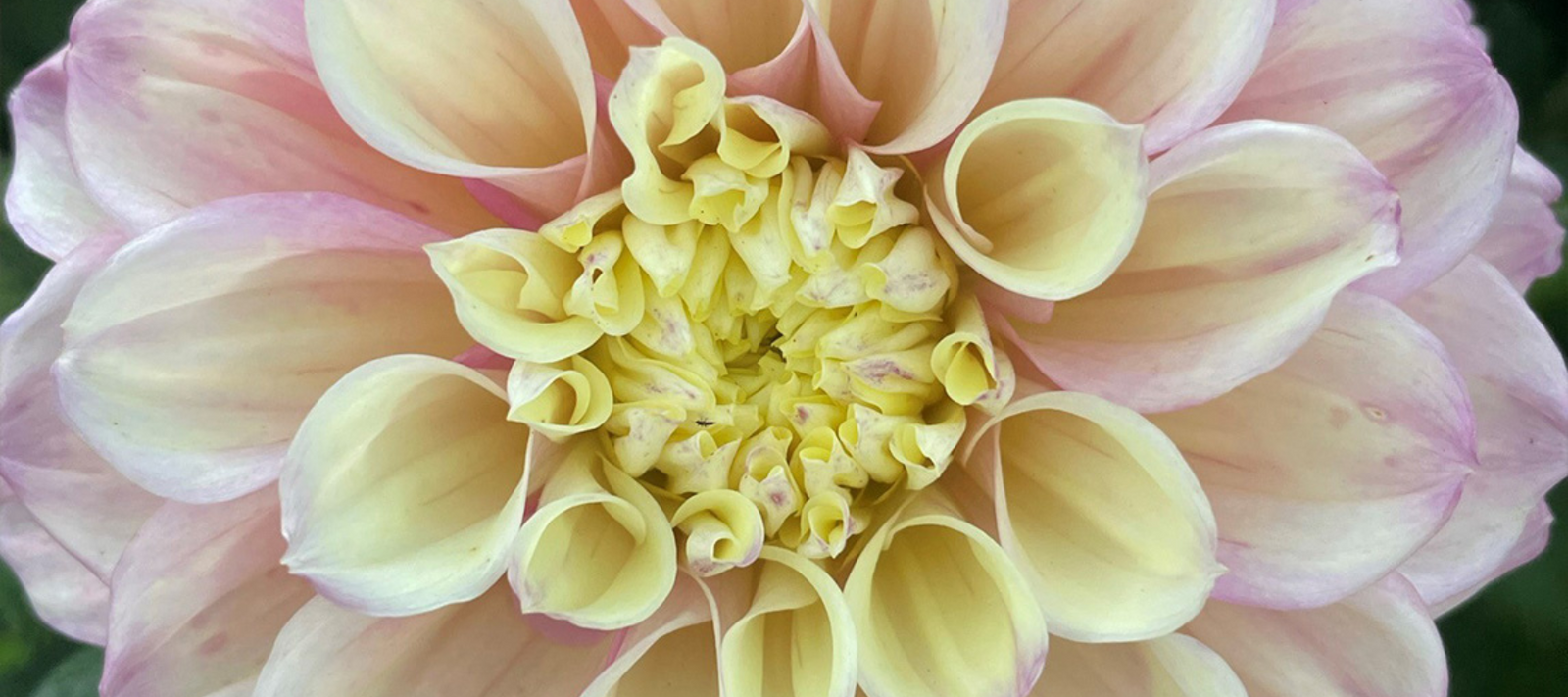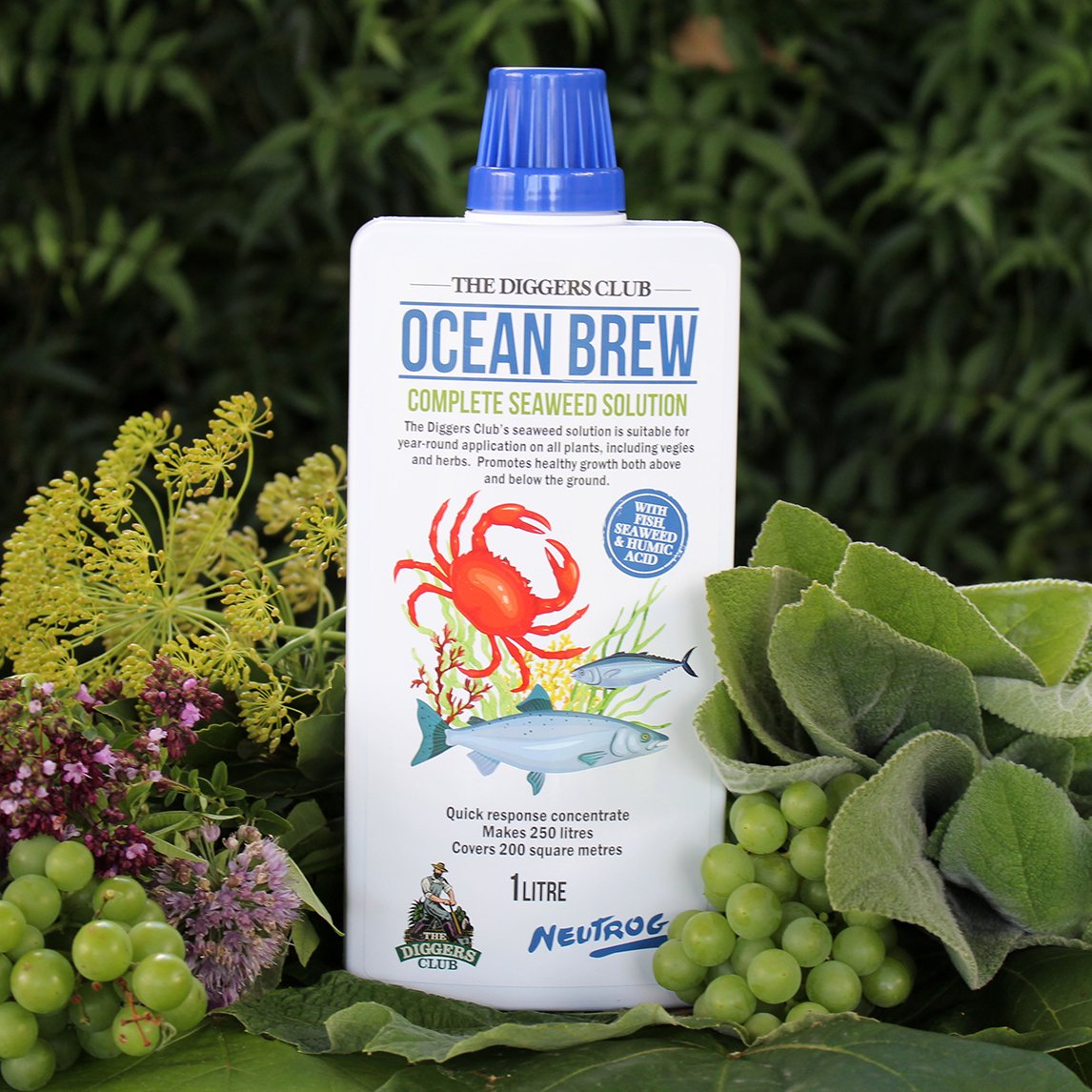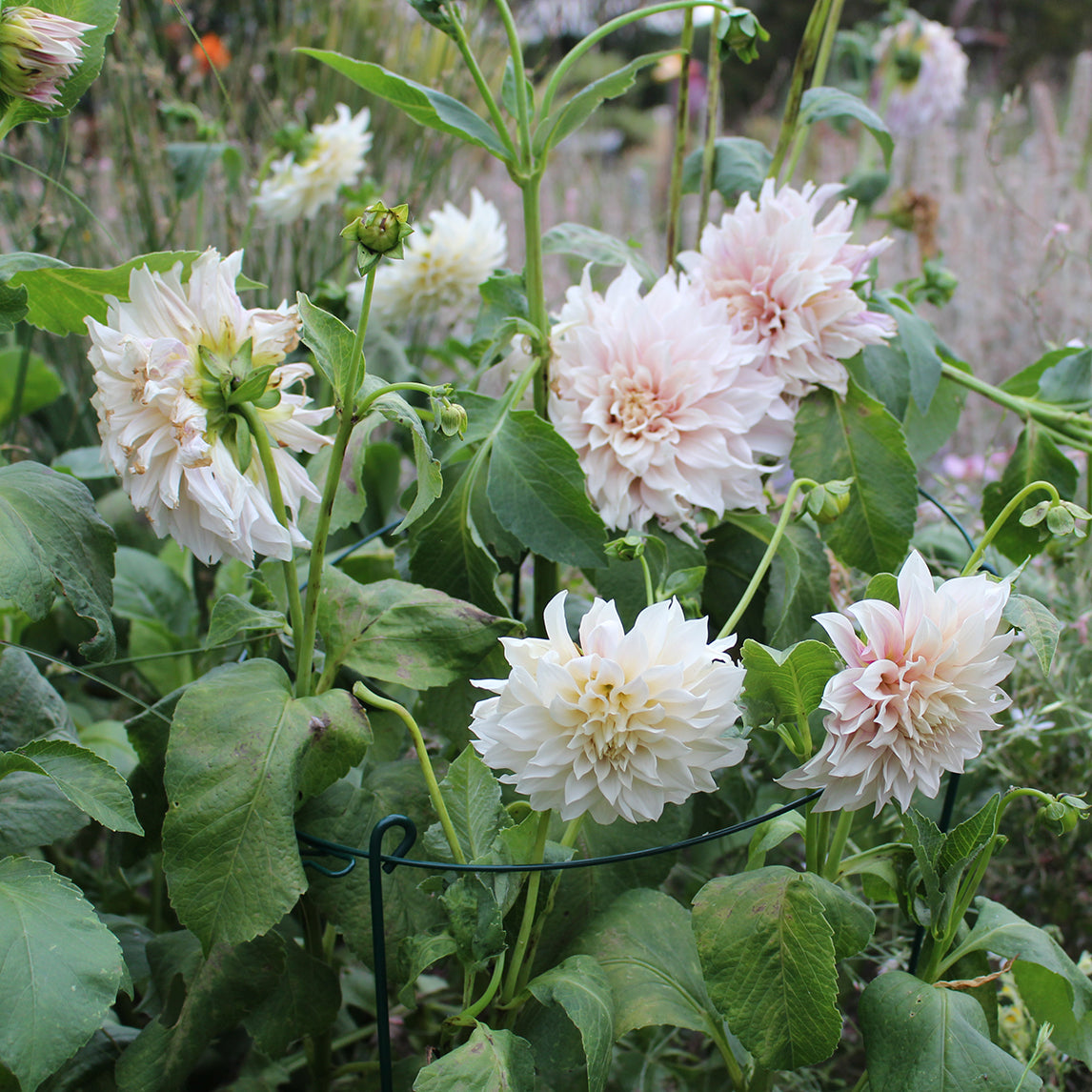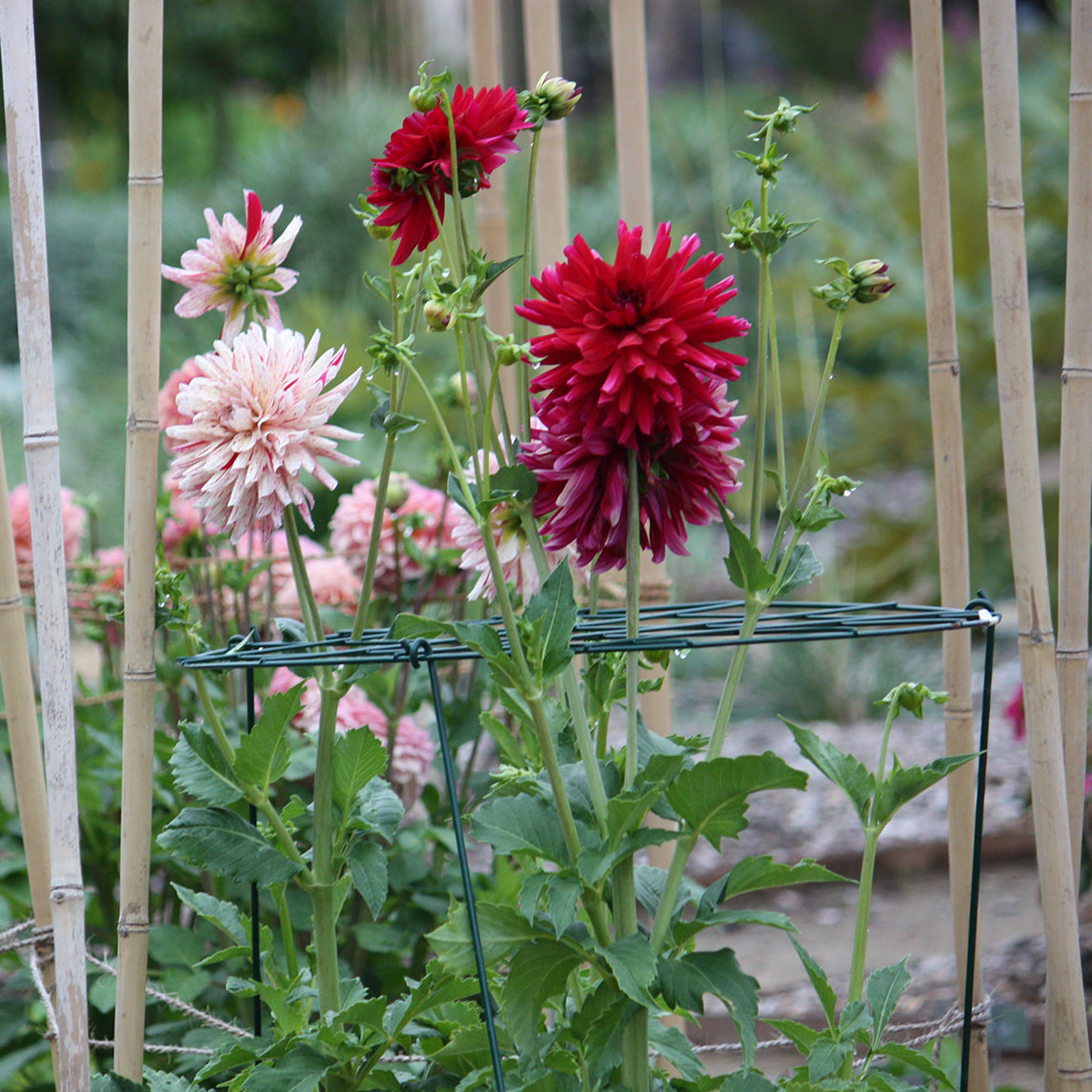
Dahlias are stunning long lived perennials. They are easy to grow and flower for an average of 6 months of the year! Available as potted plants or tubers, plants are frost sensitive and prefer a position in full sun. Usually sold as tubers in winter, or potted plants in spring and early summer, dahlias are easy to grow and create a stunning display in the garden.
Flowering from late spring throughout summer, cold weather triggers dormancy, where plants then die back down to the tuber, hibernating until the weather warms again the following spring.
Growing dahlias
Dahlias should be planted in full sun to parts shade in a raised bed or pot. Dahlias prefer a free-Plant both tubers and potted dahlias after risk of frost has past, otherwise protect with a cloche or frost cloth.
Stunning flowering perennials which can produce enormous flowering heads, prepare for flowering by providing support such as a flower ring or mesh support. Alternatively, you can use stakes and twine to help secure the flowers from damaging winds which can cause breakages.
Plant dahlias in a soil prepared with organic matter such as compost and manure. Protect from snails and slugs when young as the delicate new foliage can be severely stripped at this time. Apply a monthly application of Ocean Brew (Diggers own seaweed and fish based liquid fertiliser) to help keep plants healthy during flowering.
Dead-heading dahlias keeps them flowering, in fact the more you pick, the more they flower. However, at the end of the flowering season, remove the top third of growth to allow the tubers to reclaim as much nutrients as possible for next years display. Once the foliage has yellowed and died down, cut back to about 5cm.
Caring for dahlias during dormancy
In mild areas (>CZ8) no frosts, dahlia tubers can be left in the ground for many years and only lifted and split every 3-5 years to renew vigour. However, in moist clay soils and or in climates that get heavy frosts (<CZ8), tubers should be lifted and stored during winter months.
Tubers should only be lifted after foliage has died back completely. Lift the crown and tubers together. Knock off or wash off the unwanted soil. Large clumps of dahlias can be split when you have multiple growing points or 'crowns'. Each division will require its own crown (sometimes called an eye), most easily recognised by any old stems remaining attached. Keep lifted tubers in a cool, dark position, protected with a little sphagnum or sawdust.
Replant tubers after the last risk of frost, ideally when plants are just beginning to show new shoots.
Dahlia Growing Tips
- Dahlias require at least 6 hours of full sun per day and a well-drained nutrient rich soil.
- Prepare soil by adding compost or well-rotted cow manure and a little lime if your soil is acidic. Ideally pH should be 6 to 6.5.
- When planting potted dahlias, position at the same depth as they are in the pot and protect from snails and slugs
- Plant your dahlia tubers so that the ‘crown’ is at a depth of 8cm with a spacing of 50cm apart (for tall types) or 20cm apart (for mini types.)
- Sprinkle with some Blood and Bone and water in well. Protect from snails and slugs while foliage is emerging.
- Mulch plants well with compost and straw once foliage emerges to prevent water loss during hot summer months.
- When foliage reaches a height of 40cm (for talls) or 20cm (for minis) tip out the ends of plants to encourage bushier for self-supportive growth. Stake tall types as required and or cut back to prevent plants from breaking.
- Pick flowers regularly to encourage repeat flowering for many months.
How to plant dahlia tubers
It is important to wait until the risk of frost in your area has subsided before planting. Select a free draining position in either full sun or part shade

Using a fork or trowel, prepare the soil to a depth of 25cm mixing in some well-aged compost and manure.
 The tuber should be planted at a depth of 10cm with the stalk (head wood) at soil level.
The tuber should be planted at a depth of 10cm with the stalk (head wood) at soil level.
Backfill, making sure the top of the tuber remains exposed. Mark with a stake or label to avoid digging mishaps.

Apply a good blanket of mulch, leaving the stalk clear.







